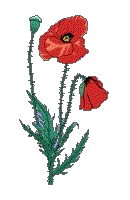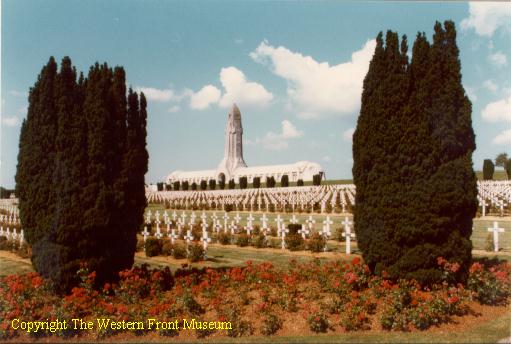
The
Western
Front
Museum
Last updated:
Introduction
Interest
History class
Lessons to be learned
The unknown dead





About this site
Introduction
Not until John McCrae's famous poem 'In Flanders Fields' - describing the true horror of The First World War -
saw the light of day this title more or less took over in history as synonym for
the 'The Western Front'. The title can now also be frequently found
as book-title for publications connected in one or another to the First World War.
The poppie, as depicted in the lefthand topcorner on our website, has become a symbol of The Great War (Armistice Day - 11th. November). Those
of you who have ever had the opportunity of visiting the First World War battlefields
will understand the symbolism this flower has with regard to the Great War.
Interest
Our personal interest in World War
One started over 35 years ago. It more or less began when our chairman met this elderly Englishman
on a camping-site somewhere near Le Havre in France. Making conversation he told the Englishman that
he - being interested in The Second World War at the time - was on his way to the Normandy
beaches with the intention of visiting the various famous places such as
Pointe-du-Hoc, Longues sur Mer, Merville, Pegasus Bridge and all the other sites.
The Englishman used to have the same area but had now moved on to the First World War.
He described some of the places he had visited over the years, mainly in the
Verdun area. At that time our chairman had no idea that his return trip would lead him to that
same city of Verdun. Yes, we know, this is not in a straight line back to Holland, but
in those days he made it a habit of exploring France every year starting the
30th. of April (our former Queen's Birthday), and during a week's leave covering sometimes a distance of over 3000 km
in his trusty Mini Clubman.
 |
Douaumont Ossuary (remains of 130.000 unknown soldiers)
and National cemetery (15.000 graves of identified French soldiers). TOP
History class
To cut a long story short, from that day on he started to read and collect everything to do with World War One.
Because The Netherlands stayed neutral during this conflict (Germany was not
interested in this tiny country at the time although mixed interest could be the real
reason judging by the way trade was conducted during the war by these so-called "neutral countries"), not many Dutch books were published on the matter. Even at school during
history class World War One was hardly discussed although the Dutch Army remained
mobilized along the Belgium and German border from the 1st. August 1914 up to the 11th. November 1918.
Part of the Dutch Air Force was made up of British, German and French planes which for some reason or another
landed in our country, not to mention the Fokker planes which Anthony Fokker himself brought
over by train from Germany once the war ended. Even today we still have names and places in The Netherlands which remind us of
the Belgium and French refugees who stayed in our country during the war
(Vluchten voor de Groote Oorlog, Belgen in Nederland 1914-1918 and Oorlogsgasten, Vluchtelingen en krijgsgevangenen in Nederland tijdens de Eerste Wereldoorlog).
In all over one million foreigners, mostly Belgians, were granted asylum in The Netherlands. The German Emperor Wilhelm II was also granted asylum on the 10th. November 1918, he was never extradited and died in Doorn in 1941.
Lessons to be learned
The last couple of years some very good battlefield tour-guides written by - surprisingly enough - Dutch authors ("Velden van Weleer" by Chrisje and Kees Brants and "Ieper 14 | 18" by Richard Heijster to name a view) came on the market. Judging by the number of reprints one could suggest that the interest in this area is rising which I think is a good thing. A lot could be learned from WW1, especially because history seems to repeat itself over and over again.
TOPTHE UNKNOWN DEAD
He died alone in the dark, the horrible dark,
And no man knew where he lay
His body was shattered and flung by the monstrous death
Where the shell-fiends slay !
Hurled to the winds by the mine, the terror unknown
That sudden leaps from below !
Left in No-man's-land in the fiery hell
Where none may go.
He paced where a crash of stone, and a blazing town
Were his unwatched funeral pyre
He fell in the flaming wreck of his broken wings
In a shroud of fire.
The infinite waters hide his burial-place
And the great waves speak no name
He went from the Sea and the Land on unnumbered fields
Unknown to fame.
With the trumpets' peal, with the roll of the muffled drums,
Our homage we fitly bring.
We carry him home, and the nation forms his guard,
His nearest - the King.
He lies with his peers, in the country's sanctuary,
Where makers of Britain trod,
And will hold our pride in faith till Réveillé sounds
At the call of God.
Member of the N.V.B.M.B. (Dutch branch of the European Cartridge Research Association)
Copyright © The Western Front Museum Foundation